
After discovering the extraordinary capital of Romania, let's move forward to an utterly different world. I have always wanted to go to the Black Sea, and when it turned out that it lies only two hours away from Bucharest, I could not resist the temptation to go there.
In general, I had many problems with purchasing a ticket and finding the best connections, not to mention a two hours delay on my way there, but I still have the conclusion that it was totally worth it.
I was travelling through the plains of Muntenia, the other historical region within Wallachia, then see the swamps and watery habitats of Dobruja, where Danube empties into the sea.


The most important city of the region and also the biggest port of Romania is Constanța, a place which has been inhabited by people since the very ancient times – this was my destination too, and I was very curious, how this legendary city looks like.
Its story began with the ancient Greeks, who established many colonies by the coasts of the Black Sea including Tomis, which was founded by Greek settlers from Miletos.



The name of Tomis is derived either from the name of a Scythian (Iranian) queen called Tomyris or, which is more likely, from a Greek word meaning ravine - if you see the neighborhood of the city, this second version completely makes sense.
It is said after the argonauts had stolen the Golden Fleece, the king of Colchis was chasing them, but they killed the king’s son who was their prisoner and spread the pieces of his corpse around Tomis – therefore the king had to stop and could not continue the hunt until he collected the pieces (it's a bit like the Osiris myth from Egypt).
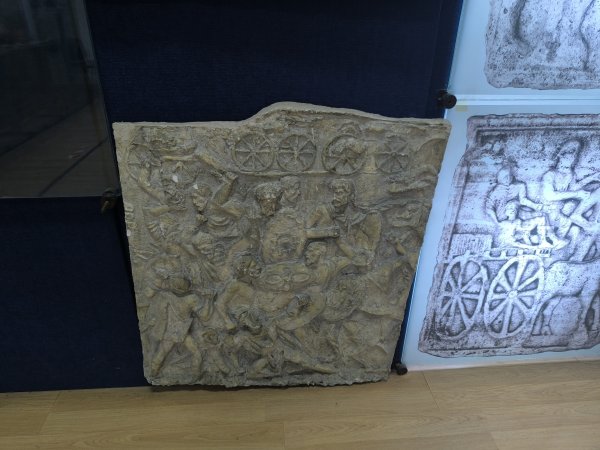

Tomis today is more famous for history and literature fans due to the Roman times, because Publius Ovidius Naso (in English known as Ovid), the popular Roman poet was sent here to exile. Ovid did not feel well far away from his beloved Italy, as he describes his despair in Epistulae ex Ponto (‘Letters from the Black Sea’).
Emperor Augustus banished him to some kind of unknown reason that the poet mentions as carmen et error ('a song and a mistake'), but most probably he criticized the ruler somehow.



The main work of Ovid is Metamorphoses (‘Transformations'), which is a series of epic poems showing the very best of Greco-Roman mythology.
As the title implies, there are plenty of transformations related to gods, nymphs and humans, who sometimes turn into animals, sometimes plants, which can be temporary or permanent, and salvation or punishment depending on the story.


Although Ovid did not like his life in Tomis, nowadays he has obviously an extremely huge cult in the city: it is enough to think about the fact that the main square is named Piața Ovidiu after him, where a famous sculpture of him stands in the middle, in front of the Museum of Archeology.
The iconic sculpture is the work of Ettore Ferrari who also created a similar statue for the city of Sulmona, Italy, where the Roman poet was born.
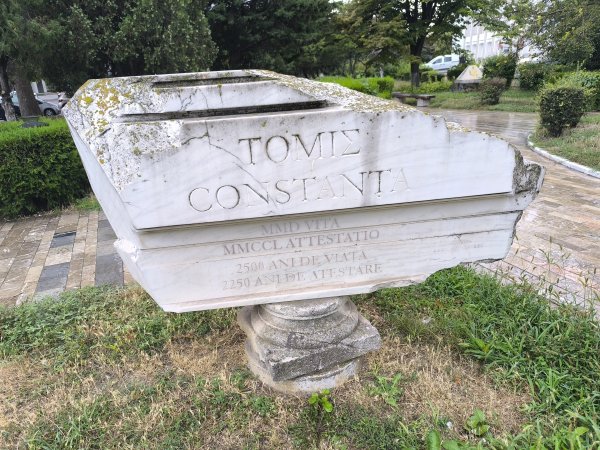

Since the museum was mentioned, I also have to tell you a few words about it. In fact, I almost did not enter, because I could not imagine that there would be much to see there, since Tomis was far away from the center of the Roman Empire and not even on the coastline of the Mediterranean Sea which was in the focus.
Well, I was utterly wrong, because the museum had such a huge collection which was nearly in the same league with those Roman artifacts I saw in Naples, Ravenna and Rimini.


After a couple of rooms, I was pretty sure that the visit was over, but there was always another and another exhibition.
Pots, vases, urns, amphoras and other ceramics from a very tiny to a nearly human size; idols of gods and other small sculptures; rattles and toys for children; coins, earrings, necklaces and other jewelry; stone tablets, ancient inscriptions and pieces of columns, and even the reconstructed tombs of noble women from the Dacian and Roman times.


Maybe the greatest treasure of this ancient art collection was the so-called Glycon snake: a beautiful statue related to a strange cult appeared in the Roman Empire around the 2nd century.
Namely, a mystical Greek prophet called Alexander of Abonoteichus, who claimed himself to be the son of Asclepius, god of medicine, whose symbol was indeed a snake.


Apart from that, snake appears in ancient Macedonian religion, and according to some artificial legends, the real father of Alexander the Great was not Philipp II, but Zeus himself disguised as a serpent in order to impregnate princess Olympias, mother of the famous Macedonian king. Glycon was basically created by the prophet's imagination and according to Greco-Roman writer Lucian it was only a cheap fraud to mislead people.

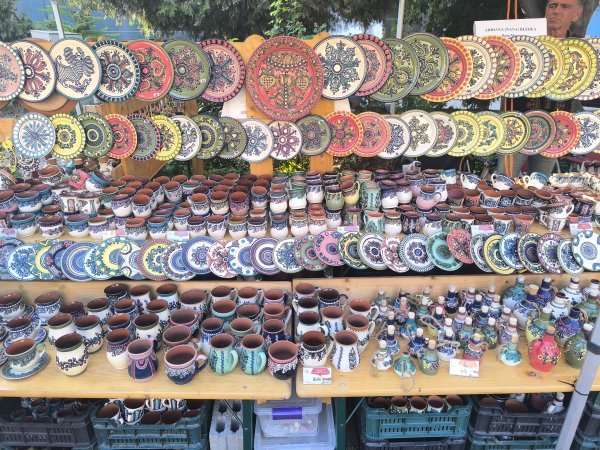
There were some additional exhibitions on the highest floor about the communist times in Romania including some furniture, political posters and manifests, photos and descriptions of significant leaders of that era (first of all of Ceaușescu and his precessor, Gheorghiu-Dej), and showing the unendurable life of prisoners.


Besides, there were many documents such as school living certificates and references of youth movements, such as the pioneer movement: a communist version of the scout moment which was known very well in Hungary and other Eastern-European socialist countries during my parents’ childhood.


The most unique building that somehow did not fit the image of the Constanța I expected, was a real mosque which was located not so far from the Ovidius Square.
If you know history and the fact that the city belonged to the Ottoman Empire for a while and that Wallachia was a vassal of the Turks as well, it would be obvious that they built the mosque.

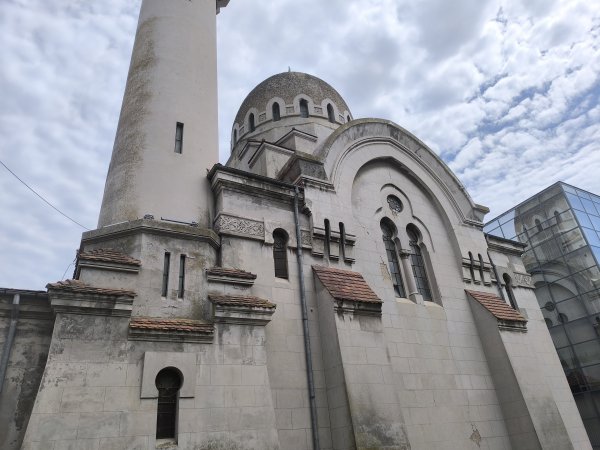

However, the building was the idea of King Charles at the beginning of the 20th century for the Muslim community of the city (there is a statue of Atatürk because of the same Turkish heritage). The mosque therefore is called Carol I Mosque or sometimes King’s Mosque, and it is possible to attend it today.
Finally I skipped it, but in return I visited the Cathedral of St. Peter and Paul, which’s interior was an absolute winner for me among the Orthodox churches, in spite of all the beauties I observed in Bucharest.



Somehow I just felt something more transcendent and heavenly inside comparing to the rest of the churches, and it made me to stop and be rather a pilgrim than a simple tourist.
Unfortunately, I did not see plenty of other religious buildings, such as a Roman Catholic Basilica of St. Anthony that I apparently did not notice when I passed by, but also a Synagogue and a Sephardic temple all proving the multicultural feature of Constanța I had not seen since my trip to Sofia.


The city has an enormous industrial port nowadays including the headquarters of the Romanian Navy, several docks, ships, cranes, offices and warehouses, and of course, there are armed guards if anyone tries to approach this part, while there is also a huge, abandoned rust belt of old factories.


Not so tempting for the first look, but if you face the sea and move to the right from this port, you will find the corso leading to the public port and then to the beach.


This boulevard is very special, firstly, because there were dozens of statues there of different styles and themes: sailors, famous people, allegories and references on the sea and the maritime world.
Close to the boulevard there is a museum of sculptor Ion Jalea, but besides fine arts, Constanța was also a city of poets: apart from Ovid, I could also find a monument of Eminescu and of an interesting poetess, Carmen Sylva.


If you understand some Latin, the name should be suspicious: carmen means song, and silva means forest, so it seems like it is a pen name – and indeed it is.
The woman beyond the name Carmen Syla happened to be Elisabeth, Queen of Romania, the wife of King Charles I, who had been writing since her adolescence and began to write poems and stories again after the loss of her daughter.


The most remarkable piece of architecture and the most unique building, which is also the symbol of city is the Casino of Constanța, which is a marvelous and impressive work built in Art Nouveau style.
It was designed by a freshly graduated architect student, Daniel Renard, but later Antonescu came to charge.
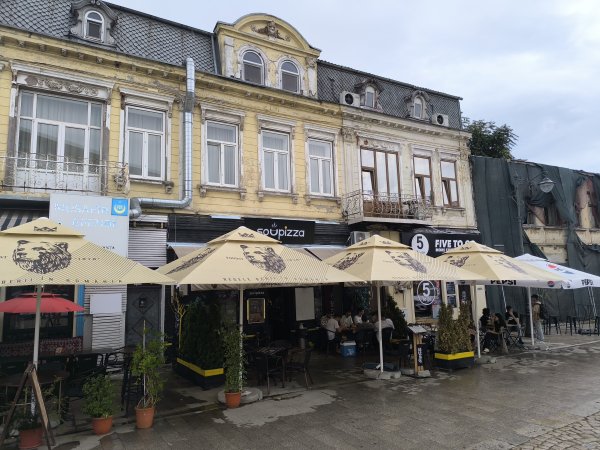

After so many shining years, the casino was once renovated by the communist government and turned into a house of culture, but due to the high operating costs, it became abandoned in the ‘80s.
There were many unsuccessful attempts to renovate the symbol of Constanța again, but finally a project has been started a few years ago, and when I was walking there, I could see the scaffolding around the building and in theory the construction will be finished soon.


Of course, I could not visit everything: the Museum of Navy and the Museum of Folk Art was missing from my list, but seeing a huge, blue, rusty ship at the railways station and some nice, colorful plates and pots in front of the museum gave me some teasers of what surprises these museums might keep for their visitors.
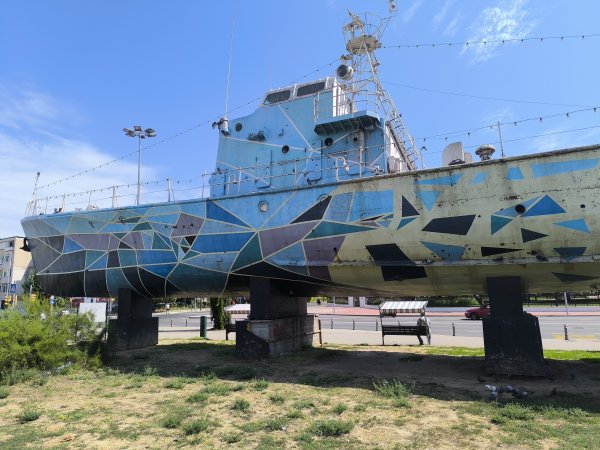


I also had to skip the Genoese Lighthouse (Farul Genovez), which was built in the Middle Ages by the Republic of Genoa, although it was not the only time Italians were present in Romania: as a matter of fact, plenty of them immigrated to the Black Sea region during the 19th century to work in the mines and on railway constructions.



By the way, if you walk from Ovidius Square to the Museum of Folk Art, you can take Bulevardul Tomis, which is a paradise of restaurants, bars and stores in the city. In the end of the boulevard, just like in Bucharest, you will find a Lupa Capitolina.
Taking into account that Constanța indeed has a history from the Ancient Roman times, I felt this statue more relevant there than in Bucharest, even if I know the reason of erecting it in the capital. Anyway, as a piece of art, it can create its atmosphere for sure.


And finally it’s time to get to the most fascinating part, which is obviously the seaside! For us, Hungarians – who usually go to Croatia and maybe to Slovenia or Bulgaria to enjoy the sea – Constanța is not so well-known or popular as a holiday spot as it is for the locals.
Nevertheless, I have to admit that just because it's not the Mediterranean sea, it can exactly give you the same kind of summer vibes and recreation as elsewhere.


The beach is not covered with pure sand, that is true, since there are some stones and shells in it, but still, it is possible the walk on it with bare foot, and, at the same time, its temperature is at least not unendurably hot as in Valencia for instance.
Beaches like Plaja Modern, which is basically a bay, are not so long maybe as in Spain, but I really wish I could have walked from the beginning to the end and climb to the top of every single dune.


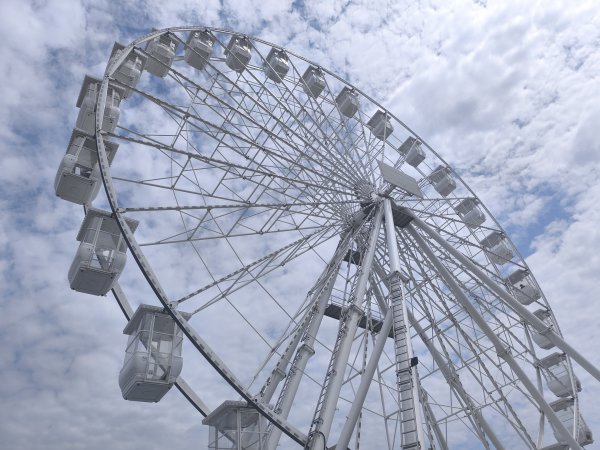
The natural circumstances reminded me to my childhood when I was visiting various parts and shores of Danube near my village. Still, I knew that it was not a river, but the sea, while there were silhouette of enormous ships in the distance as if they were some ghost ships and the sky and the water underneath was just as perfectly blue as in Italy.
By the way, after Rimini, this was the second beach where I could see a ferris wheel that provides you most probably provides with a genius view to the whole harbor.


If one is able to get out of their comfort zone and find something different from Italy, Greece, Croatia and Spain all the time, they will realize that countries like Romania also have their hidden beauties.
I really hope I could get back sometime to explore holiday destinations like Mamaia, Vama Veche, Mangalia, or the specific bunch of resort villages referring to the Olympic gods with their names: Olimp, Neptun, Jupiter, Venus, Saturn and Cap Aurora.


Based on my experiences, there are two faces of the city: one of them is the historical center that resembles the port cities of the Adria and the Mediterraneum with a lot with breakwaters, quays, ports and so on.
The other one, in return, used to be very industrial and functionalist built in the socialist era, but nowadays it develops very quickly, and there are plenty of parks, shops, residential areas and everything you need in a modern and pulsing city.


Well ,folks, that was all I had to say about my trip to Romania, and I have to tell you that it was indeed a lot to process. I spent only three nights in Bucharest and went to Constanța only for one day, but it has indeed left a footprint in my mind.
My presumptions and the stereotypes I expected proved to be completely wrong, and I do not regret a single minute of this stay. It is hard to think about it that I almost cancelled my trip just due to these concerns, but I had a strong belief that something wonderful was waiting for me there. I was right about that.
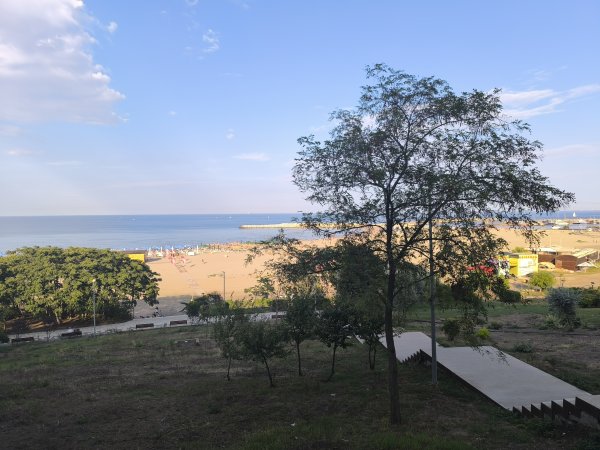

People from the streets were mostly helpful, friendly, spoke English (except a few officers who actually should have helped), and I had some nice conversations with Romanians, Italians and French I did not see coming, and I gained a lot of knowledge, experience, and tried to understand another point of view.
No one made me feel (like I had been afraid of) that I am from Hungary so in the eyes of Romanians 'I have nothing to do there'. Not at all.



The cities and streets were mostly tidy, and of course, there were old and abandoned buildings, but it was obvious that Romania really puts a lot of effort in branding and developing the country's image, which is way beyond having only Transylvanian castles, Balkan food and Drakula.
They use all the possible resources, and not just the natural and financial ones, but also everything history and culture left them as a heritage from different people from before. I think it is something that one should not envy but something they should learn from.
